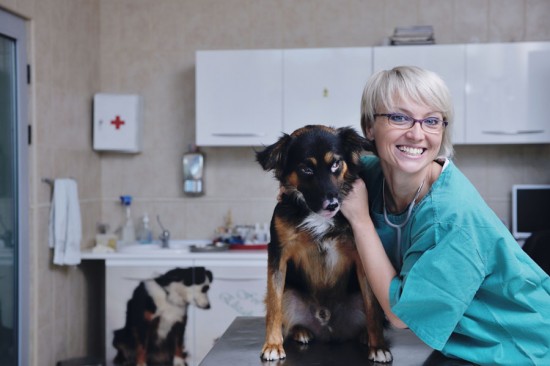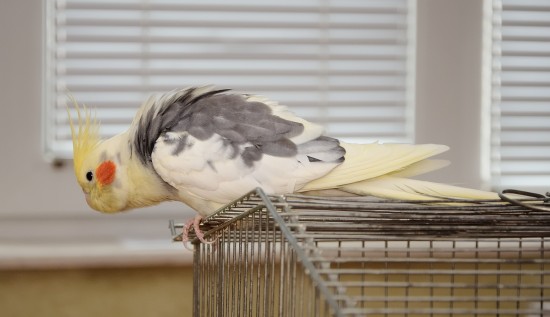

Shopping for a new veterinary practice? If there is more than one vet in your town, the decision can be daunting. You can feel secure in the knowledge that all vets must keep their skills up to date in order to remain registered with the Royal College of Veterinary Surgeons (RCVS) – but beyond that, you may wonder how you can find the best veterinary surgery for your needs. Anyone whose pet has experienced a health emergency or serious illness knows how vital it is to be able to trust and communicate with practice staff, including vets, nurses and receptionists. Pets are important members of the family, and it can be nerve-wracking to have to leave them for treatment. Choosing the best practice for your needs will help put your mind at ease during stressful times. Read on for five steps that will help you choose the best veterinary surgery for your needs.
One of the best ways to scout out a prospective veterinary surgery is to ask family or friends what their experiences have been like there. Failing that, you may turn to the web to read up on reviews or testimonials. This is not a failsafe method as experiences and personal standards may vary, but it will give you a general idea of how satisfied clients are with the services offered.
Explain to staff at the prospective veterinary surgery that you are looking for a new vet and wish to tour the practice. Most surgeries will be more than happy to oblige, so long as you can be flexible in your visiting time. The staff will likely suggest a you visit at a time when you will see the practice at it’s best, after surgery is done for the day and the facilities are clean. Top-notch practices will make you feel comfortable and explain what goes on in each of the rooms you see. Don’t be afraid to ask staff about their experience and whether they have any particular interests in the field. Many vet nurses and receptionists are trained to a very high standard, and this can make a significant difference in the level of care afforded to your pet.
Ask to see the kennel and isolation areas and take note of the layout. Are cats and dogs kept in the same room? How big are the kennels? Great surgeries have well-organised spaces that allow your pet to recover in peace and comfort, in places where staff can easily check up on them throughout the day. It goes without saying that you should keep an eye how clean the surfaces are in the prep and operating rooms especially.
It’s a good idea to ask about the services offered in the practice so you will know what is available onsite. For example, most surgeries have their own x-ray and operating facilities, but other equipment like ultrasound and in-house blood testing equipment may vary from practice to practice. Know, too, that vets are required to provide 24-hour emergency care options. Some practices do this onsite with night or on-call staff, whilst others may divert overnight urgent cases to designated emergency clinics in the area. This is very important to know in advance, as time is often of the essence in emergencies.
Some larger practices have regularly attending specialists who can diagnose and treat complicated health problems such has cancer or orthopaedic injuries. Others cases may require you to go to a second vet for referral. As alternative veterinary techniques like acupuncture become increasingly popular, you may also find these treatments offered as complementary therapies onsite. Will you be taking your pet abroad in the future? Make sure your practice has a vet that is authorised to issue pet passports.
Some practices offer non-medical services like boarding, grooming and even low-cost or free socialisation sessions. If these extras are important to you, be sure to ask about them upfront.
About half of the veterinary surgeries in the UK participate in the RCVS practice standards scheme, which is intended to promote consistently high standards of veterinary care. Participating practices are inspected once every four years, with spot-checks likely between inspections. Basic standards of hygiene, staff training, basic equipment and emergency provisions are required and practices meeting the criteria are accredited accordingly. You’ll know if your prospective surgery is accredited by the RCVS logo, which is usually displayed on promotional material or the practice website. You can also use the RCVS Find A Vet feature to find out if the accreditation is up to date. Choosing an accredited practice can add significantly to your peace of mind: it demonstrates accountability and a commitment to quality.
Veterinary overhead costs are very high; therefore medicines and treatments can quickly add up no matter where you are registered. It’s a good idea to take out pet insurance to prepare for the unexpected. In more general terms, the cost of vaccinating or even having a general health check for your pet can vary from practice to practice, so ask to see a price list before you register. Naturally surgeries in more expensive areas, like central London, may charge more for basic services than those in rural areas.
It’s ok to switch practices if you are unhappy with the service provided, but make sure that you inform both your former and current surgeries that you wish to change so they can keep your pet’s medical record up to date. Try to avoid registering your pet at more than one practice, as this can cause paperwork problems in the even of illness or injury. If you have recently relocated register your pet with a surgery as soon as you can – you never know when you’ll need to visit the vet!
 How To Help A New Puppy Settle In Their New Home
How To Help A New
How To Help A New Puppy Settle In Their New Home
How To Help A New
 Breeding Turtles
Breeding Turtles
Breeding Turtles
Breeding Turtles
 Making Your Pet Comfortable No Matter Where You Are
Most dogs need that secure feeling of home. But to have
Making Your Pet Comfortable No Matter Where You Are
Most dogs need that secure feeling of home. But to have
 How To Keep Pet Birds Safe Around The Home
How To Keep Pet B
How To Keep Pet Birds Safe Around The Home
How To Keep Pet B
 Italian Spinone Hereditary Health And Longevity
Italian Spinone H
Italian Spinone Hereditary Health And Longevity
Italian Spinone H
Copyright © 2005-2016 Pet Information All Rights Reserved
Contact us: www162date@outlook.com